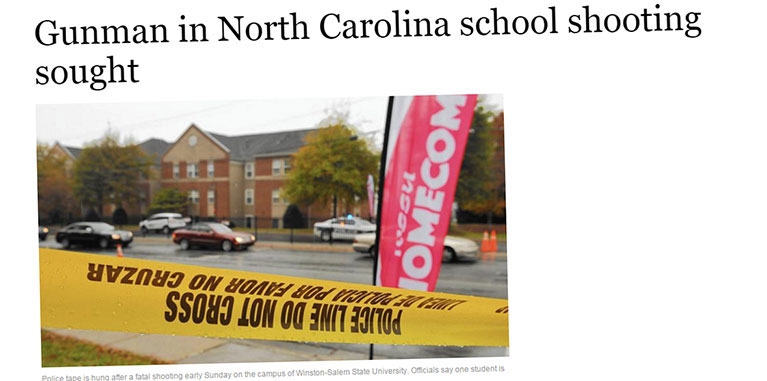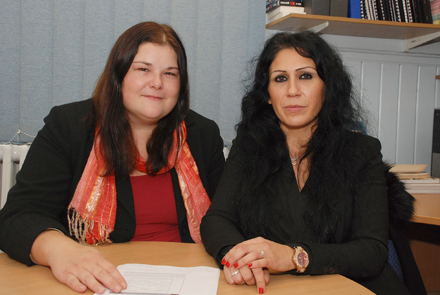New techniques for identifying “rampage” school shooters

Mon, 09 Nov 2015 13:04:00 GMT
Researchers’ work “could have practical applications in terms of prevention and intervention”
SCHOOL shootings – mainly in the USA – occur with tragic frequency. Now, investigative psychologists at the University of Huddersfield are carrying out research that is leading to new techniques for identifying potential killers.
 In a new article on “rampage” school shooters, Dr Laura Hammond and Dr Maria Ioannou (pictured right), aided by research student Olivia Simpson, describe how they have analysed 40 cases, dating from 1966 to 2012, with the age of offenders ranging from 13 to 23. All but two were male. The incidents took place in seven countries, but 29 of them were in the US, with its looser gun control laws.
In a new article on “rampage” school shooters, Dr Laura Hammond and Dr Maria Ioannou (pictured right), aided by research student Olivia Simpson, describe how they have analysed 40 cases, dating from 1966 to 2012, with the age of offenders ranging from 13 to 23. All but two were male. The incidents took place in seven countries, but 29 of them were in the US, with its looser gun control laws.
As a result of their analysis, Dr Ioannou and Dr Hammond – who are members of the University of Huddersfield’s International Research Centre for Investigative Psychology – have collated a wide range of risk factors that that can be detected in the personalities and backgrounds of school shooters.
The next step has been to develop three categories, which the authors describe as themes. These are the Disturbed School Shooter, the Rejected School Shooter, and the Criminal School Shooter. Tables and a chart in the new article, published in the Journal of Criminal Psychology, show the most common offender characteristics for each theme.
For example, 60 per cent of school shooters fall into the ‘Disturbed’ category. Their risk factors include mental illness, experience of bullying, loner tendencies, suicidal thoughts and violent writings.
‘Rejected’ school shooters might have experienced relationship break-up, have been abused at home and might have made suicide attempts. In the least common theme, ‘Criminal’ school shooters – involved in 7.5 per cent of cases – will have past convictions, a fascination with weapons, and a record of violent behaviour.
Prevention and intervention
 In the article, the authors state they have, to their knowledge, made the first attempt to “differentiate offender characteristics (or risk factors) of school shooters”. Their work could have practical applications in terms of prevention and intervention.
In the article, the authors state they have, to their knowledge, made the first attempt to “differentiate offender characteristics (or risk factors) of school shooters”. Their work could have practical applications in terms of prevention and intervention.
For example, said Dr Ioannou, the research might aid the development of programmes for teachers, who could be trained to appraise the prevalence of certain risk factors in pupils and therefore anticipate problems.
It is also vital to monitor social media, because school shooters had often written online about their violent intentions. “In 70 per cent of the cases there have been some warning signs,” added Dr Ioannou.
The research might also assist the authorities in their response to a shooting incident, said Dr Hammond. For example, an analysis of the risk factors might indicate whether or not a shooter was likely to commit suicide, which could affect the nature of the intervention and the outcome.
The two University of Huddersfield psychologists will now build on their research and hope to work with case files from the USA.
Their article concludes that the work conducted so far can form the basis for clinical intervention “grounded in the recognition of risk factors in the background of the youths and early recognition of signs of psychological distress, dysfunction and feelings of rejection.”







